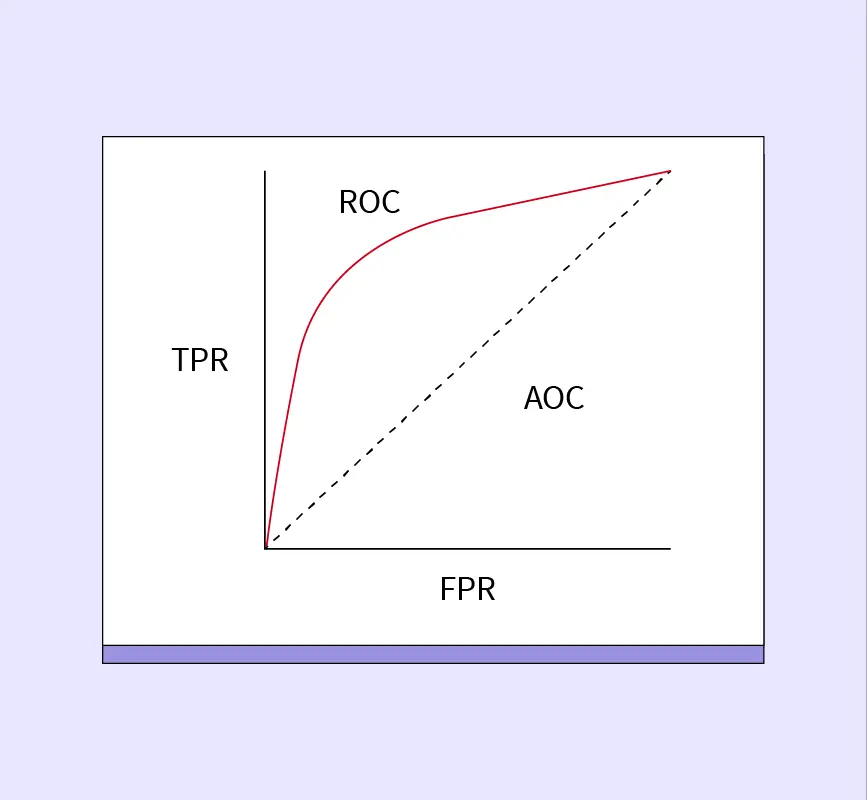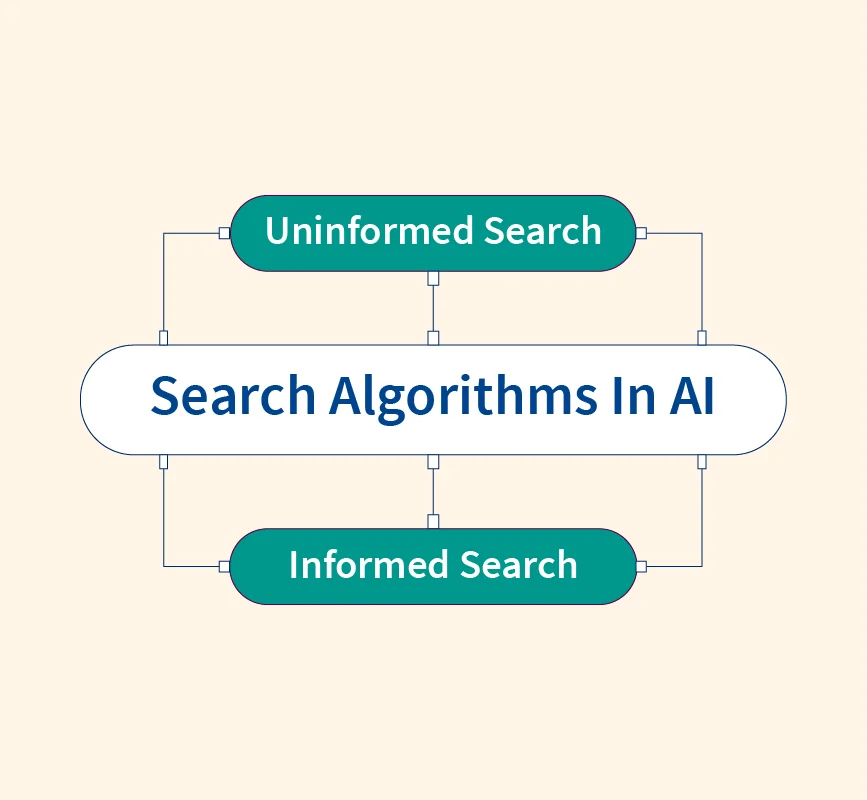Time series analysis is a powerful technique used to understand trends, patterns, and seasonal variations in data collected over time. It plays a critical role in fields such as finance, weather forecasting, healthcare, energy, and retail, where predicting future values accurately is key to decision-making. With the exponential growth in data availability, mastering time series analysis has become essential for data scientists and analysts alike. This comprehensive guide explores the fundamentals of time series data, key components, visualization techniques, preprocessing steps, forecasting models, and evaluation methods—offering a complete roadmap to understanding and applying time series forecasting effectively.
What is a Time Series?
A time series is a sequence of data points collected or recorded at specific and usually equally spaced intervals over time. Unlike random or unordered data, time series data is inherently chronological, making time a critical dimension for analysis. Each observation in a time series is dependent on previous values, which differentiates it from other types of data structures.
Real-world examples of time series data include:
- Stock prices recorded every minute or day
- Temperature readings logged hourly or daily
- Electricity consumption measured every second
- Retail sales tracked weekly or monthly
- Website traffic monitored by hour or day
Time series data is widely used for forecasting, trend analysis, and anomaly detection. Its ability to capture and model temporal patterns helps businesses and researchers make informed, data-driven decisions.
It is important to distinguish time series data from cross-sectional data, which captures observations at a single point in time across multiple subjects (e.g., sales from different stores on the same day). While cross-sectional analysis examines relationships among variables at a fixed time, time series analysis focuses on understanding how a single variable evolves over time, taking into account temporal dependencies and patterns like seasonality, trends, and cycles.
Components of Time Series Data
Time series data is composed of several key components, each representing different underlying patterns. Understanding these components is essential for accurate modeling and forecasting.
1. Trend
The trend represents the long-term direction in the data—whether it’s increasing, decreasing, or remaining stable over time. Trends often emerge due to factors like economic growth, technological advancement, or demographic shifts.
Example: The consistent rise in global average temperature over decades reflects a positive trend.
2. Seasonality
Seasonality refers to regular, repeating patterns observed over a fixed period, such as daily, weekly, monthly, or yearly intervals. These variations are caused by external influences like weather, holidays, or business cycles.
Example: Ice cream sales tend to spike during summer months every year, showing clear seasonal behavior.
3. Cyclic Patterns
Cyclic variations are long-term fluctuations that do not follow a fixed frequency, unlike seasonality. These cycles often correspond to economic or business cycles and can span multiple years.
Example: A country’s GDP might follow multi-year cycles of expansion and recession due to macroeconomic factors.
4. Irregular (Random) Components
The irregular or residual component includes unpredictable and random variations that cannot be attributed to trend, seasonality, or cyclic behavior. These are typically caused by unexpected events like natural disasters, pandemics, or sudden market shocks.
Example: A sudden drop in retail sales due to a nationwide strike would be considered an irregular component.
Time Series Visualization Techniques
Effective visualization is crucial in time series analysis. It helps identify patterns, trends, and anomalies that may not be immediately obvious in raw data. Different types of plots highlight different aspects of time-dependent behavior.
Common Plot Types
- Line Charts: The most widely used method for visualizing time series data. Line plots provide a clear view of how values change over time and are ideal for identifying trends and seasonality.
Use Case: Tracking monthly revenue over a year. - Heatmaps: Heatmaps represent data in a matrix format where values are colored based on intensity. In time series, they are especially useful for visualizing seasonal and daily patterns over longer periods.
Use Case: Analyzing hourly website traffic over weeks. - Seasonal Subseries Plots: These plots group time series data by season (month, quarter, etc.) to highlight recurring seasonal patterns.
Use Case: Understanding month-wise sales fluctuations over several years.
Python (Matplotlib and Seaborn):
import matplotlib.pyplot as plt
import seaborn as sns
df['Date'] = pd.to_datetime(df['Date'])
df.set_index('Date')['Value'].plot(title='Line Chart - Time Series')
plt.show()R (ggplot2):
library(ggplot2)
ggplot(data, aes(x = Date, y = Value)) +
geom_line(color = "blue") +
ggtitle("Time Series Line Chart")Preprocessing Time Series Data
Before any modeling or forecasting can be done, preprocessing is essential to ensure the time series data is clean, consistent, and appropriately formatted. Key preprocessing steps include handling missing data, managing outliers, and resampling.
Data Cleaning
- Missing Values: Gaps in time series can distort trend and seasonality detection. Methods to handle them include forward-fill (ffill), backward-fill (bfill), linear interpolation, or simply removing missing timestamps.
- Outliers: Unusual spikes or drops can skew forecasts. These can be identified using rolling statistics, z-scores, or visual inspection and handled by capping, smoothing, or imputation.
Resampling & Aggregation
Resampling adjusts the frequency of the time series, either by upsampling (e.g., daily to hourly) or downsampling (e.g., hourly to daily). This is useful when aligning data to a consistent time interval or reducing granularity for analysis.
- Downsampling reduces data noise and improves interpretability.
- Upsampling may require interpolation to fill gaps.
Python (Pandas):
# Handling missing values
df['Value'] = df['Value'].fillna(method='ffill')
# Downsampling from daily to monthly
monthly_df = df.resample('M').mean()
# Interpolating upsampled data
upsampled = df.resample('H').mean().interpolate()R (dplyr and zoo):
library(dplyr)
library(zoo)
# Fill missing values
data$Value <- na.locf(data$Value)
# Aggregation by month
monthly <- data %>%
group_by(month = floor_date(Date, "month")) %>%
summarise(Value = mean(Value))Preprocessing ensures that the time series data is ready for decomposition, stationarity checks, and modeling—forming the backbone of robust forecasting workflows.
Time Series Analysis and Decomposition
Time series decomposition involves breaking down a series into its constituent components—trend, seasonality, and residuals—to better understand the structure of the data and to prepare it for modeling.
Techniques
- Classical Decomposition: Separates a time series into trend, seasonal, and irregular components using either an additive or multiplicative model.
- Additive: $Y_t = T_t + S_t + e_t$
- Multiplicative: $Y_t = T_t \times S_t \times e_t$
- STL (Seasonal-Trend Decomposition using Loess): A robust and flexible method that uses local regression smoothing to isolate trend and seasonal components. It handles seasonality changes over time and is widely used in real-world datasets.
- X-11 Decomposition: A statistical method developed by the U.S. Census Bureau. It handles irregular seasonal patterns and is suitable for economic time series. It’s more complex and less frequently used in basic analytics workflows but remains valuable in macroeconomic forecasting.
Python (statsmodels):
from statsmodels.tsa.seasonal import seasonal_decompose
result = seasonal_decompose(df['Value'], model='additive', period=12)
result.plot()Python (STL Decomposition):
from statsmodels.tsa.seasonal import STL
stl = STL(df['Value'], period=12)
res = stl.fit()
res.plot()R (forecast package):
library(forecast)
ts_data <- ts(data$Value, frequency = 12)
decomposed <- stl(ts_data, s.window = "periodic")
plot(decomposed)Decomposition allows analysts to extract structured signals and isolate noise, enhancing both interpretability and model accuracy in forecasting tasks.
Understanding Stationarity in Time Series
Stationarity Concept
A time series is considered stationary if its statistical properties—mean, variance, and autocorrelation—remain constant over time. Stationarity is a fundamental assumption in many time series forecasting models, particularly ARIMA. Without stationarity, the model’s predictions can become unreliable or biased due to fluctuating trends or seasonality.
Stationary data ensures that the relationships between observations are consistent, which is critical for the model to learn from past behavior and generalize well into the future.
Tests for Stationarity
Two commonly used tests for checking stationarity include:
- ADF (Augmented Dickey-Fuller) Test: Tests for the presence of a unit root, which indicates non-stationarity. A low p-value (< 0.05) suggests the series is stationary.
- KPSS (Kwiatkowski-Phillips-Schmidt-Shin) Test: Complements ADF by testing the null hypothesis of stationarity. A high p-value (> 0.05) indicates the data is likely stationary.
Using both tests in tandem offers a more reliable assessment.
Making Data Stationary
If a series is non-stationary, it can be transformed using several techniques:
- Differencing: Subtracting the current value from its previous value helps remove trends or seasonality.
df['diff'] = df['Value'].diff()- Log Transformation: Stabilizes variance by compressing large fluctuations.
df['log'] = np.log(df['Value'])- Detrending: Involves removing the trend component using statistical models or decomposition methods.
# R - differencing
diff_series <- diff(ts(data$Value, frequency=12))Forecasting Time Series
Forecasting involves predicting future values based on previously observed data. Choosing the right algorithm depends on the data’s structure—such as seasonality, trend, and stationarity. Here are some of the most widely used time series forecasting methods.
Popular Algorithms
- AR (Autoregression): Models the current value of the series as a linear combination of its past values.
- MA (Moving Average): Uses past forecast errors to predict future values.
- ARMA (Autoregressive Moving Average): Combines AR and MA for stationary data.
- ARIMA (Autoregressive Integrated Moving Average): Adds differencing to handle non-stationarity.
- SARIMA (Seasonal ARIMA): Extends ARIMA by including seasonal components to handle complex patterns.
- Exponential Smoothing Methods:
- Simple Exponential Smoothing: Suitable for data with no trend or seasonality.
- Holt’s Linear Trend Model: Captures trend.
- Holt-Winters Method: Captures both trend and seasonality.
- Prophet: Developed by Facebook, Prophet is effective for time series with seasonal effects and holidays. It automatically handles missing data, outliers, and trend shifts.
- LSTM (Long Short-Term Memory): A type of recurrent neural network (RNN) designed to capture long-term dependencies. It’s ideal for complex, non-linear time series but requires larger datasets and more computation.
Python (ARIMA with statsmodels):
from statsmodels.tsa.arima.model import ARIMA
model = ARIMA(df['Value'], order=(1,1,1))
results = model.fit()
forecast = results.forecast(steps=12)Python (Prophet):
from prophet import Prophet
df_prophet = df.rename(columns={"Date": "ds", "Value": "y"})
model = Prophet()
model.fit(df_prophet)
future = model.make_future_dataframe(periods=12, freq='M')
forecast = model.predict(future)R (Prophet):
library(prophet)
df <- data.frame(ds = data$Date, y = data$Value)
model <- prophet(df)
future <- make_future_dataframe(model, periods = 12, freq = "month")
forecast <- predict(model, future)Evaluating Time Series Forecasts
Accurate forecasting is only meaningful if we can evaluate model performance using appropriate metrics and validation techniques tailored for temporal data.
Performance Metrics
- MAE (Mean Absolute Error): Measures the average absolute difference between predicted and actual values.
$$MAE = \frac{1}{n} \sum_{t=1}^{n} |y_t – \hat{y}_t|$$
- RMSE (Root Mean Squared Error): Penalizes larger errors more heavily than MAE, making it sensitive to outliers.
$$RMSE = \sqrt{\frac{1}{n} \sum_{t=1}^{n} (y_t – \hat{y}_t)^2}$$
- MAPE (Mean Absolute Percentage Error): Expresses forecast error as a percentage, making it useful for business applications.
$$MAPE = \frac{100\%}{n} \sum_{t=1}^{n} \left|\frac{y_t – \hat{y}_t}{y_t}\right|$$
Each metric offers unique insights. MAE and RMSE provide absolute error sizes, while MAPE offers a scale-independent interpretation.
Cross-Validation
Unlike traditional ML, time series data can’t be randomly shuffled due to temporal dependencies. Instead, time-aware cross-validation methods are used.
- Rolling Forecast Origin (or Walk-Forward Validation): The model is retrained after each step by expanding the training window. It simulates real-world forecasting where the model continuously adapts with new data.
- TimeSeriesSplit (scikit-learn):
from sklearn.model_selection import TimeSeriesSplit
tscv = TimeSeriesSplit(n_splits=5)
for train_idx, test_idx in tscv.split(data):
train, test = data[train_idx], data[test_idx]Top Python Libraries for Time Series
Python offers a rich ecosystem of libraries specifically designed for time series analysis and forecasting. Here’s a comparative overview of four widely used tools, each with its own strengths and use cases.
statsmodels
Strengths:
- Classical statistical models like ARIMA, SARIMA, Exponential Smoothing
- Built-in support for hypothesis testing and decomposition
- Detailed diagnostics and model interpretability
Limitations:
- Steeper learning curve for beginners
- Less automation compared to newer libraries
Best For: Researchers and analysts familiar with statistical modeling.
fbprophet (now prophet)
Strengths:
- Handles trend, seasonality, holidays, and missing data automatically
- Minimal tuning required; great for business analysts
- Supports both additive and multiplicative models
Limitations:
- Less flexible than statsmodels for custom structures
- Struggles with highly volatile data
Best For: Business forecasting with clear seasonal trends and holidays.
pmdarima
Strengths:
- Automated ARIMA modeling using AIC/BIC-based selection
- Built-in seasonal decomposition and differencing
- scikit-learn-style API for integration into pipelines
Limitations:
- Limited support for non-linear models
- Works best with stationary or seasonally adjusted series
Best For: Quick deployment of ARIMA models without manual tuning.
tsfresh
Strengths:
- Extracts hundreds of time-series features for ML pipelines
- Ideal for classification and clustering tasks
- Compatible with pandas and scikit-learn
Limitations:
- Not a forecasting tool itself
- Can be computationally intensive for large datasets
Best For: Feature extraction for machine learning models on time series.
Time Series in Machine Learning
While traditional time series models rely on statistical assumptions, machine learning (ML) methods offer greater flexibility in modeling non-linear patterns and interactions—especially when combined with effective feature engineering.
Supervised ML on Time Series
To apply ML algorithms to time series, the data must be reframed into a supervised learning format, where past observations are used to predict future values.
Feature Engineering Techniques:
- Lag Features: Use previous values (e.g., t-1, t-2) as predictors.
- Rolling Windows: Compute moving averages or standard deviations over fixed periods.
- Datetime Features: Extract components like day of the week, hour, or month to capture seasonality.
Popular Models:
- Random Forest (RF) and XGBoost are robust to outliers and capable of capturing complex patterns.
- These models do not require stationarity or assumptions about the data’s structure, making them ideal for practical forecasting tasks.
Example use cases: demand forecasting, predictive maintenance, and financial market prediction.
Deep Learning Approaches
Recurrent Neural Networks (RNNs) are specifically designed to handle sequential data. However, they struggle with long-term dependencies and vanishing gradients.
Long Short-Term Memory (LSTM) networks solve this issue by introducing memory cells and gates that retain information over longer sequences. They are well-suited for:
- Multi-step forecasting
- Anomaly detection
- Natural language and financial time series modeling
LSTM architecture requires large datasets and high computational power but can outperform traditional models in capturing long-range, non-linear dependencies.
Limitations and Challenges of Time Series Analysis
Despite its power, time series analysis presents several practical challenges that can impact model accuracy and deployment:
- Non-Stationarity: Many real-world time series are non-stationary, requiring careful preprocessing. Failure to stabilize variance or remove trends can lead to biased forecasts.
- Data Scarcity: Time series models rely on historical data. Limited or short sequences can result in poor generalization, especially for deep learning models.
- Overfitting: Complex models like ARIMA or LSTM can overfit to noise, especially when hyperparameters are not tuned properly or when cross-validation isn’t applied correctly.
- Computational Expense: High-frequency or multivariate time series can be resource-intensive to process, especially when using deep learning or ensemble methods.
- Interpretability: While statistical models offer transparency, ML models—particularly neural networks—can act as black boxes, making it hard to explain predictions to stakeholders.
Conclusion
Time series analysis and forecasting play a pivotal role in extracting insights and making informed decisions across industries—from finance and healthcare to retail and energy. This guide explored the foundational concepts, components, preprocessing techniques, modeling approaches, and evaluation metrics that define effective time series workflows. With tools like ARIMA, Prophet, and LSTM, and libraries such as statsmodels and fbprophet, analysts can tackle a wide range of forecasting challenges. As businesses continue to embrace data-driven intelligence, time series modeling is evolving into a vital skill, merging traditional statistics with modern machine learning to deliver predictive insights at scale.
Reference:


